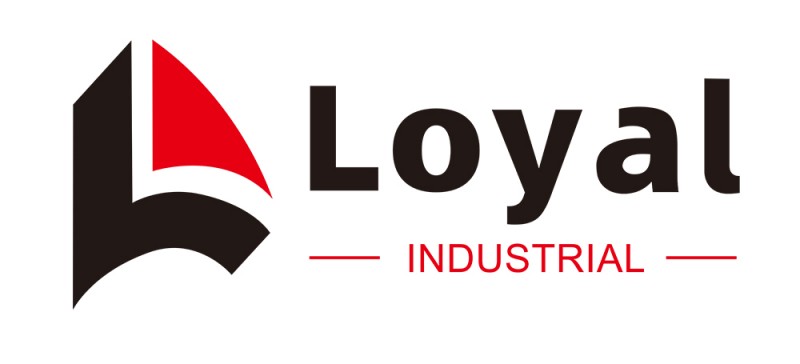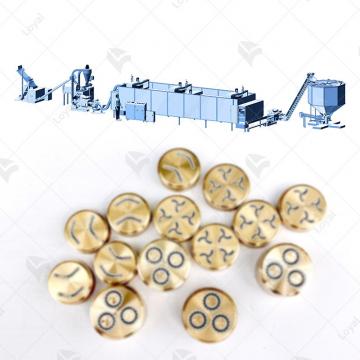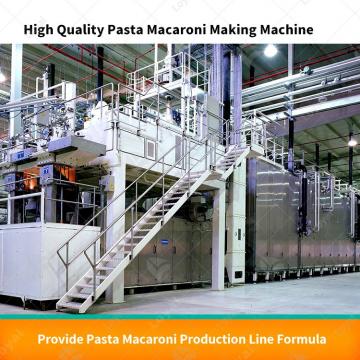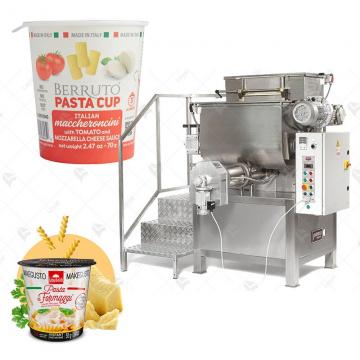Mastering Excellence: High-Efficiency Strategies in Fully Automated Pasta Manufacturing Companies
Mastering Excellence: High-Efficiency Strategies in Fully Automated Pasta Manufacturing Companies
Introduction
Shandong Loyal Industrial Co., Ltd. has incorporated advanced technologies from TECHNOPAST and lazzaretti in the production of its macaroni.In the relentless pursuit of excellence within fully automated pasta manufacturing companies, the quest for high-efficiency strategies becomes paramount. Industry leaders recognize that mastering these strategies is pivotal for achieving success and maintaining a competitive edge.
Efficiency is the cornerstone of success in fully automated Dry Pasta Production Line manufacturing. As the industry grows, the need to streamline processes and optimize production becomes more apparent. This section explores the importance of efficient strategies and their transformative impact on competitive dynamics in the pasta manufacturing industry.

Evolution of Pasta Manufacturing Technology
To comprehend the nuances of high-efficiency strategies, an understanding of the evolution of pasta manufacturing technology is essential. From traditional methods to cutting-edge technologies, the journey has been marked by significant milestones that paved the way for fully automated processes.
Technological Milestones Driving Efficiency
Key technological advancements have played a pivotal role in propelling fully automated pasta manufacturing companies toward high-efficiency strategies. This chronological overview not only traces the industry's technological evolution but also sets the stage for a deeper exploration of the commitment to excellence.
Core High-Efficiency Strategies
This section delves into the core high-efficiency strategies embraced by fully automated pasta manufacturing companies. Precision, speed, and resource optimization emerge as key pillars contributing to excellence in the production process.

Precision and Automation Synergy
The synergy between precision and automation is a defining characteristic of high-efficiency strategies. Technological innovations, such as robotics and artificial intelligence, enhance precision in fully automated processes, revolutionizing the way pasta is manufactured.
Leading the Industry: High-Efficiency Pasta Manufacturer Profiles
In profiling high-efficiency pasta manufacturers at the forefront of mastering excellence, this section explores the operations, technologies, and innovations that make these companies pioneers in high-efficiency strategies.
Comparative Analysis of Industry Leaders
A comparative analysis sheds light on the diverse high-efficiency approaches adopted by different fully automated pasta manufacturing companies. This emphasizes the versatility and effectiveness of strategies in optimizing efficiency, showcasing the industry's adaptability.
Case Studies: Showcasing Excellence
Real-world case studies take center stage, providing tangible examples of successful implementations of high-efficiency strategies. These case studies set benchmarks for the industry, illustrating how fully automated pasta manufacturers have mastered excellence.
Comparative Analysis of Case Studies
A comparative analysis of case studies deepens our understanding of the varied approaches and technologies adopted by different high-efficiency pasta manufacturers. This section underscores the real-world impact of these strategies on production efficiency and quality.

Overcoming Challenges and Future Outlook
Addressing potential challenges associated with high-efficiency strategies is critical. This section explores strategies and solutions for overcoming obstacles, emphasizing continuous innovation and adaptation in the ever-evolving technological landscape.
Continuous Innovation for Sustained Excellence
The importance of continuous innovation is highlighted, emphasizing the dynamic nature of pasta manufacturing. The industry's commitment to staying ahead of challenges, embracing innovations, and adapting to evolving consumer demands is crucial for sustained excellence.
Future Trends in High-Efficiency Pasta Manufacturing
Predictions for the future of high-efficiency pasta manufacturing offer insights into emerging technologies and trends. Sustainable practices, advancements in automation, and evolving high-efficiency trends shape the trajectory of the industry.
Emerging Technologies in Pasta Manufacturing
Exploring the integration of emerging technologies, such as advanced robotics and machine learning, provides a forward-looking perspective on the industry's future. These innovations are poised to redefine high-efficiency processes in pasta manufacturing.
Conclusion
In conclusion, this article underscores how high-efficiency strategies are the linchpin for mastering excellence in fully automated pasta manufacturing companies. The call for continued innovation and collaboration echoes throughout, ensuring a sustainable and prosperous future for the industry. As technology advances, the industry must remain adaptive, embracing change to maintain its position at the forefront of high-efficiency pasta manufacturing.

Common Questions about Pasta Manufacturing
As we delve into the world of pasta manufacturing, it's essential to address common questions that often arise. Here, we provide answers to frequently asked questions about pasta manufacturing:
1. What sets fully automated pasta manufacturing apart from traditional methods?
Fully automated pasta manufacturing involves the use of advanced machinery and technology to streamline the production process. Traditional methods rely on manual labor, while automation ensures precision, speed, and efficiency.
2. How do high-efficiency strategies contribute to the quality of pasta production?
High-efficiency strategies, such as precision and automation synergy, play a pivotal role in enhancing the quality of pasta production. These strategies minimize errors, ensure consistency, and optimize resource utilization, resulting in superior-quality pasta.
3. Which technological milestones have driven efficiency in pasta manufacturing?
Over the years, pasta manufacturing has witnessed significant technological milestones, including the integration of robotics, artificial intelligence, and advanced automation. These milestones have revolutionized the industry, making it more efficient and productive.
4. Can you provide examples of leading high-efficiency pasta manufacturers and their innovations?
Certainly. Companies like Pastificio Di Martino, Creamette, San Giorgio, La Molisana, and Banza are at the forefront of high-efficiency pasta manufacturing. Their innovations include state-of-the-art machinery, sustainable practices, and a commitment to excellence.
5. What challenges do pasta manufacturers face in adopting high-efficiency strategies?
Challenges may include initial investment costs, workforce adaptation to new technologies, and the need for continuous innovation. Overcoming these challenges requires a proactive approach and a commitment to staying ahead of industry trends.





